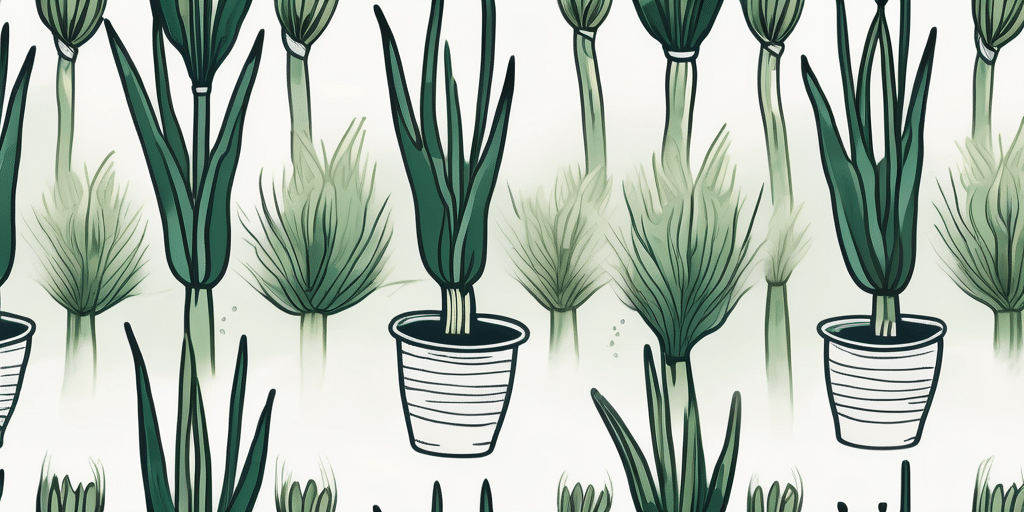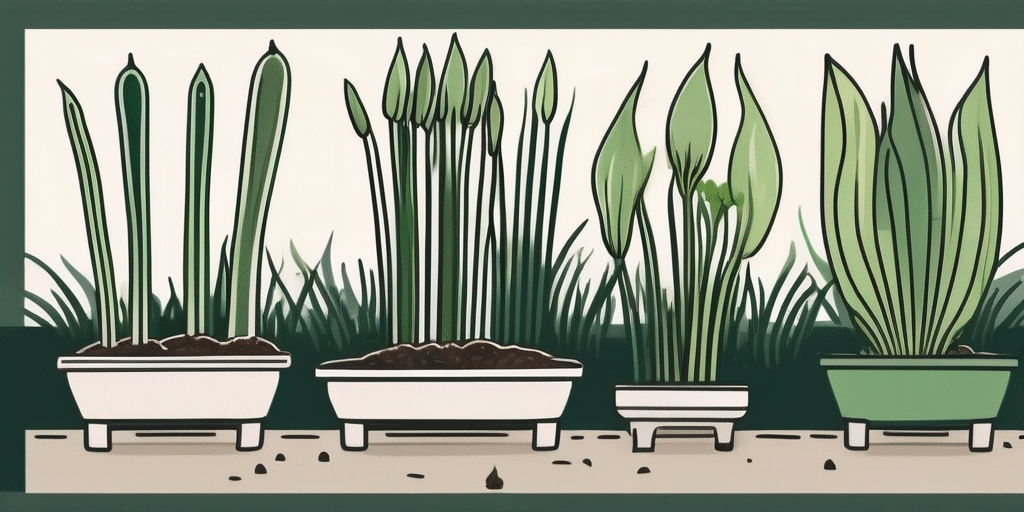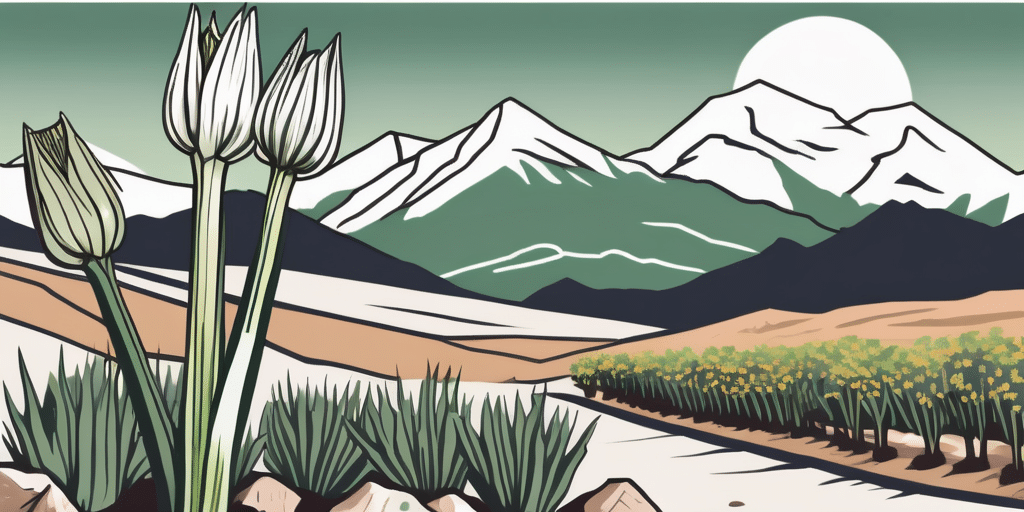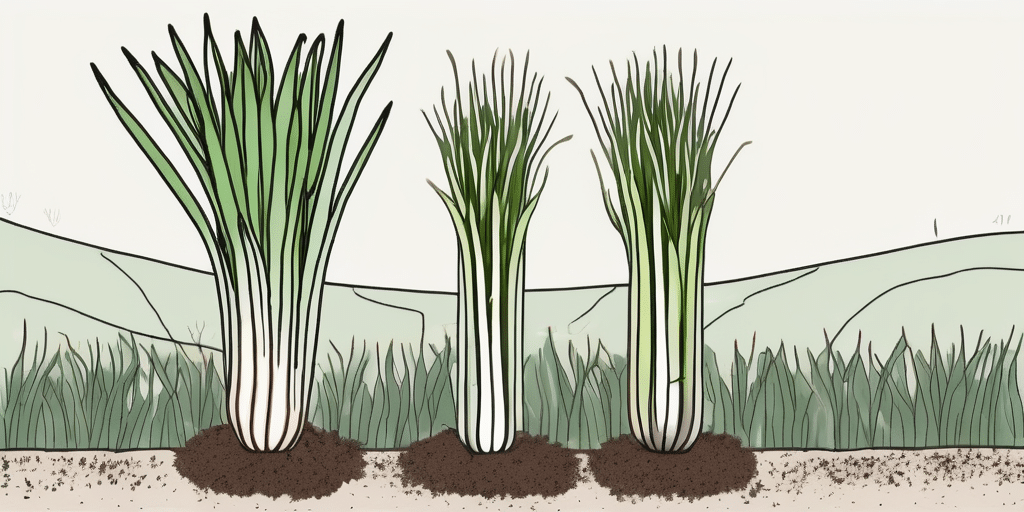Leeks, with their mild and onion-like flavor, are a favorite vegetable among gardeners in Zones 9a and 9b. If you live in these regions and want to try your hand at growing leeks, this article will guide you through the process from start to finish. From when to plant to when to harvest, we will cover all the necessary steps to ensure a successful leek harvest.
Best Leeks Varieties for Zones 9a and 9b
Before you start planting leeks, it’s essential to choose the right variety for your region. Here are some top picks for Zones 9a and 9b:
- 1. ‘American Flag’: This variety is known for its reliable and hardy nature. It produces long and thick stalks with a mild flavor.
- 2. ‘King Richard’: If you’re looking for early-maturing leeks, this variety is a fantastic choice. It has a slender shape and a delicate taste.
- 3. ‘Bandit’: With its beautiful blue-green leaves, ‘Bandit’ is not only visually pleasing but also resistant to bolting in warm climates.
These varieties will thrive in Zones 9a and 9b, ensuring a bountiful leek harvest.
When considering which leek variety to plant in Zones 9a and 9b, it’s important to take into account not only the climate but also the soil conditions. Leeks prefer well-draining soil rich in organic matter, so amending the soil with compost before planting can greatly benefit their growth.
Furthermore, leeks are heavy feeders and will benefit from a balanced fertilizer application throughout the growing season. A slow-release fertilizer high in nitrogen can promote healthy leafy growth, while a fertilizer with higher phosphorus levels can encourage robust root development.
Growing Leeks in Zones 9a and 9b
Now that you’ve selected the right leek variety for your region, it’s time to get your hands dirty and start growing them. Follow these steps for successful leek cultivation:
- Site Selection: Choose a location in your garden that receives full sun or partial shade. Leeks prefer well-drained soil, so consider amending with organic matter.
- Soil Preparation: Before planting, work the soil to a depth of 12 inches and remove any rocks or debris. Leeks appreciate a slightly acidic soil between pH 6.0 and 6.8.
- Starting Leek Seeds: Start leek seeds indoors 8 to 10 weeks before the last frost date in your area. Sow them in individual pots to avoid root disturbance during transplantation.
- Transplanting: Once the seedlings have reached 6 to 8 inches in height, it’s time to transplant them into the garden. Space the leeks 6 inches apart in rows with 12 inches between each row.
- Watering and Mulching: Leeks require consistent moisture, so water them regularly. Apply a layer of organic mulch around the plants to retain soil moisture and suppress weed growth.
- Fertilization: Feed your leeks with a balanced fertilizer once a month during the growing season. Avoid high-nitrogen fertilizers, as they can lead to excessive leaf growth and reduced bulb development.
- Pest and Disease Management: Keep an eye out for common leek pests such as leek moths and onion maggots. Consult your local agricultural extension for recommended organic pest control methods.
Leeks, with their mild onion flavor, are a versatile vegetable that can be used in a variety of dishes. They are a cool-season crop that thrives in Zones 9a and 9b, where the mild winters and moderate temperatures provide ideal growing conditions. When properly cared for, leeks can be harvested year-round, providing a continuous supply of fresh produce for your kitchen.
One important aspect of leek cultivation is site selection. While leeks prefer full sun, they can also tolerate partial shade. It’s crucial to choose a location in your garden that receives at least 6 hours of sunlight per day. Additionally, leeks require well-drained soil to prevent waterlogging, which can lead to root rot. If your soil is heavy or compacted, consider amending it with organic matter such as compost or well-rotted manure to improve its drainage and fertility.
Another key factor in successful leek cultivation is soil preparation. Before planting, it’s essential to work the soil to a depth of 12 inches, removing any rocks or debris that may hinder root development. Leeks prefer a slightly acidic soil with a pH between 6.0 and 6.8. Testing your soil’s pH level and making necessary adjustments can ensure optimal growing conditions for your leeks.
Climate & Hardiness in Zones 9a and 9b
Understanding the climate and hardiness in Zones 9a and 9b is crucial for successful leek cultivation. These zones experience mild winters and hot summers, resulting in a longer growing season for leeks. However, extreme heat can affect their growth and development.
When temperatures rise above 85°F (29°C), leeks may bolt, causing premature flowering and a reduction in the quality of the bulbs. To combat this, consider shading the leek plants during the hottest part of the day or opting for heat-tolerant varieties like ‘Bandit’.
When to Plant Leeks in Zones 9a and 9b
Timing is key when it comes to planting leeks. In Zones 9a and 9b, the best time to plant leeks is in late fall or early winter. Aim to have them in the ground around 2 to 3 months before the first expected frost date.
By planting leeks during this period, you allow them to establish their root systems and gradually grow during the cooler months. This ensures that they are well-established by the time spring arrives, leading to healthy and robust plants.
When to Harvest or Pick Leeks in Zones 9a and 9b
After months of nurturing your leek plants, it’s finally time to reap the rewards. Leeks are typically ready for harvest when they reach maturity, which is around 100 to 140 days after transplanting.
Here are some signs to look for when determining if your leeks are ready to be harvested:
- – Bulb Size: The bulbs should be around 1 to 2 inches in diameter.
- – Leaf Color: The lower leaves should have turned yellow or brown.
- – Firmness: Gently squeeze the leeks; they should feel firm and compact.
To harvest, gently loosen the soil around the leek plants with a garden fork. Lift the leeks out of the ground, being careful not to damage the bulbs. Shake off any excess soil and trim the roots and green foliage.
Now that you know the ins and outs of growing leeks in Zones 9a and 9b, it’s time to get started! Happy growing!
Frequently Asked Questions
Q: Can I grow leeks in containers in Zones 9a and 9b?
A: Yes, leeks can be grown in containers in Zones 9a and 9b. Choose a container that is at least 12 inches deep to accommodate the long roots of leeks. Ensure that the container has drainage holes and use a well-draining potting mix. Water the leeks regularly and provide proper fertilization.
Q: Can I grow leeks from seedlings instead of starting from seeds?
A: Yes, you can start with leek seedlings instead of sowing seeds. However, it’s essential to select healthy and vigorous seedlings from reputable nurseries or garden centers. Follow the transplanting instructions mentioned earlier to ensure successful establishment.
Q: What can I do with leek greens?
A: Leek greens pack a flavorful punch and can be used in various dishes. You can chop them up and add them to soups, stews, or stir-fries. Alternatively, you can blanch them and use them as a garnish or mix them into dips and spreads for a delightful twist.
Q: How long do leeks store?
A: Leeks can be stored for several weeks when kept in optimal conditions. Trim the roots and remove the dark green foliage, leaving only a few inches of green. Store them loosely wrapped in a plastic bag in the refrigerator crisper drawer.
Now armed with the knowledge of planting and growing leeks in Zones 9a and 9b, you can embark on an exciting journey of cultivating these versatile and delicious vegetables. Whether you use them in hearty soups or sauté them as a side dish, homegrown leeks are sure to elevate your culinary creations. Happy gardening and bon appétit!
Join the How to Grow Everything Community
Ready to take your gardening skills to the next level? Subscribe for free to How to Grow Everything and start building the garden of your dreams today! Receive personalized gardening advice tailored to your specific location, grow zone, and experience level. Our family is dedicated to helping you grow with the best gardening tips, special offers, and thousands of free articles—all delivered straight to your inbox with no spam, just pure gardening gold. Join our community now and grow with us!






